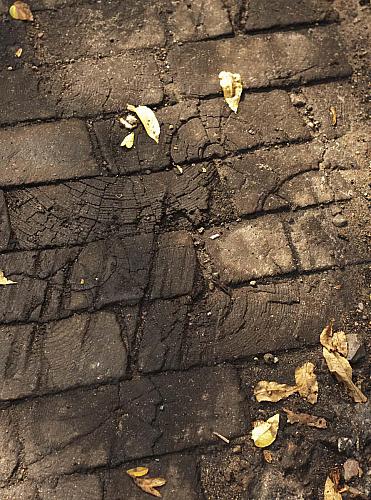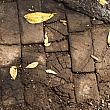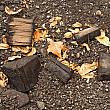Cedar Paving Blocks on N. Fountain St.
2015
In 1894 cedar blocks were used when the Board of Public Works approved a plan for improving Fountain Street from North Lafayette to North Union Streets. Some of those cedar blocks have recently been exposed during street work in the 500 block of Fountain Street and the photographer, taking a summer walk in Heritage Hill, was able to get a close look at how well preserved the cedar blocks were after 121 years of traffic. Tree rings are visible in some of the blocks. The long straight lines on the photo above are from equipment used to remove the current road surface.
Subjects
no subjects found
Full Details
| Title | Cedar Paving Blocks on N. Fountain St. |
|---|---|
| Date | 2015 |
| Format | Photograph |
| Notes | A change in Grand Rapids pavements from cobblestone to wood was made in 1874. The first wood pavements were made of blocks cut from four-inch pine planks set on end upon a gravel bed, the interstices between the blocks well tamped with gravel and sand, making a wood roadway six inches in depth. The pine pavement did not prove very lasting, the wood decaying in five or six years. The next advance was in the use of cedar blocks cut from the bodies of small tress in six-inch lengths, the bark and sapwood trimmed off and the blocks set on end. These were first used in Pearl Street from Canal Street to the Bridge, and in Monroe Street, by way of experiment. The cedar block has proved much the more durable, and is the popular pavement to this day.[1] [1] Albert Baxter. History of the City of Grand Rapids, New York & Grand Rapids: Munsell & Co., 1891, p. 552. |
| Location In Photo | Grand Rapids, MI |
| Collection | Private Collection |
| Location |  |




